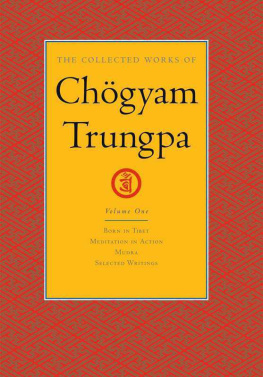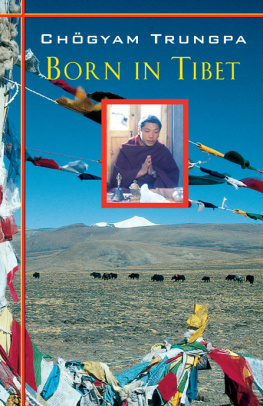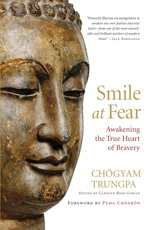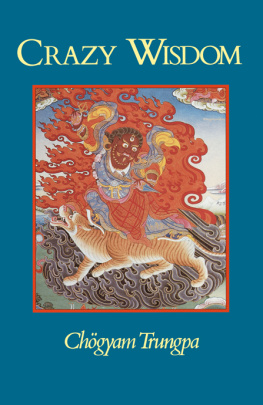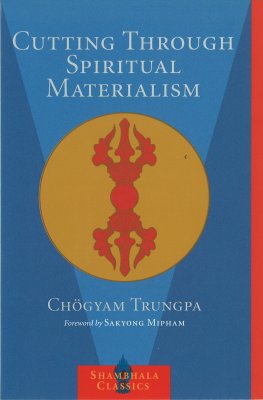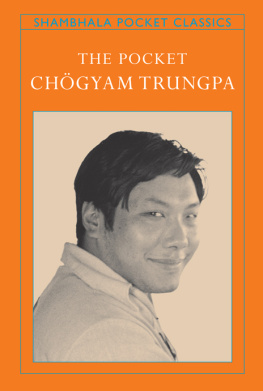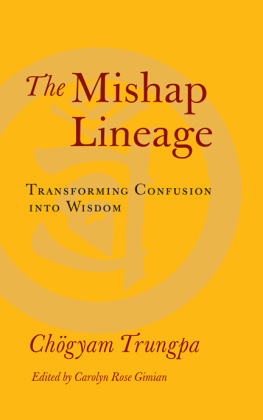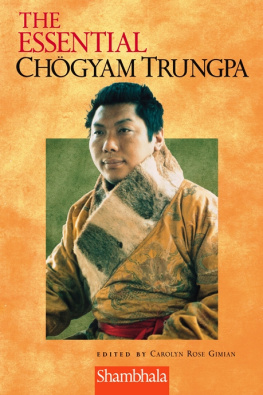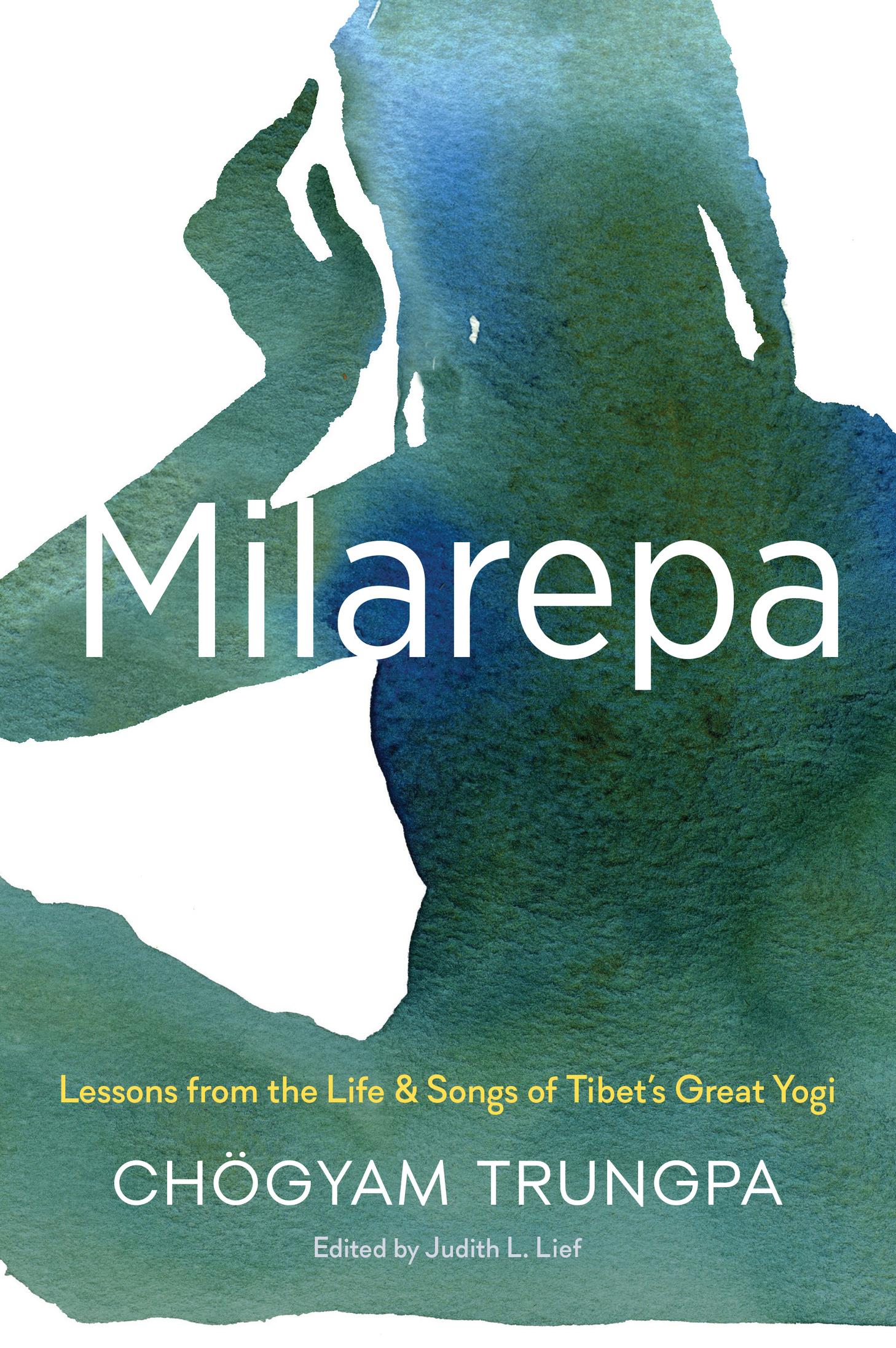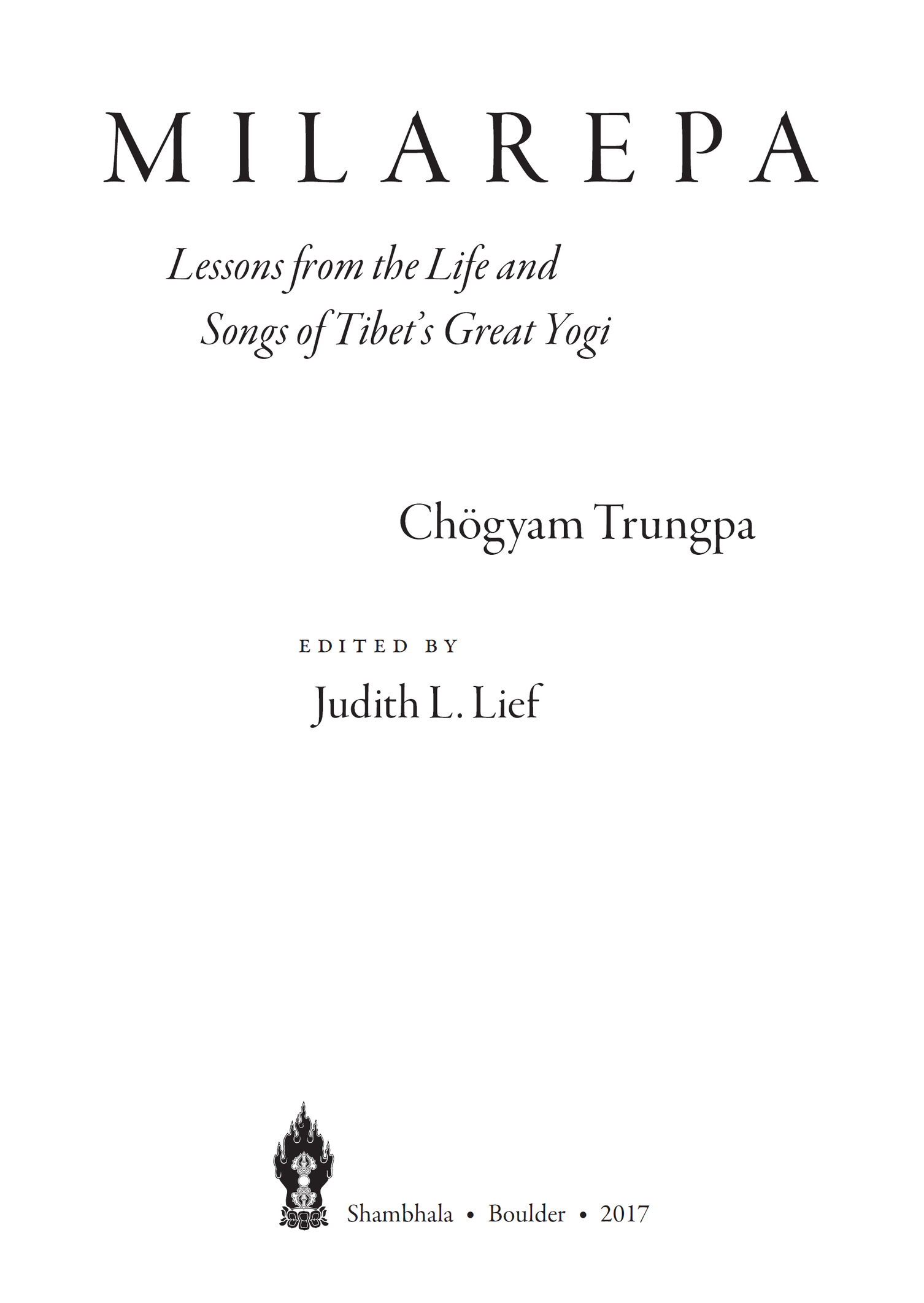Contents
ALSO BY CHGYAM TRUNGPA
Crazy Wisdom
Cutting Through Spiritual Materialism
Great Eastern Sun: The Wisdom of Shambhala
Meditation in Action
Mindfulness in Action: Making Friends with Yourself through Meditation and Everyday Awareness
The Myth of Freedom and the Way of Meditation
Ocean of Dharma: The Everyday Wisdom of Chgyam Trungpa
The Path Is the Goal: A Basic Handbook of Buddhist Meditation
Shambhala: The Sacred Path of the Warrior
Smile at Fear: Awakening the True Heart of Bravery
The Truth of Suffering and the Path of Liberation
Shambhala Publications, Inc.
4720 Walnut Street
Boulder, Colorado 80301
www.shambhala.com
2017 by Diana J. Mukpo
Milarepas Song of Craziness 2016 Nalanda Translation Committee
Milarepas Parting Message to Gampopa from
The Rain of Wisdom by Chgyam Trungpa (Boston: Shambhala Publications, 2010)
Nalanda Translation Committee and Diana J. Mukpo
All rights reserved. No part of this book may be reproduced in any form or by any means, electronic or mechanical, including photocopying, recording, or by any information storage and retrieval system, without permission in writing from the publisher.
eBook design adapted from printed book designed by Greta D. Sibley
Library of Congress Cataloging-in-Publication Data
Names: Trungpa, Chgyam, 19391987, author. | Lief, Judith L., editor.
Title: Milarepa: Lessons from the Life and Songs of Tibets Great Yogi / Chgyam Trungpa; edited by Judith L. Lief.
Description: First edition. | Boulder: Shambhala, 2017.
Identifiers: LCCN 2016027280 | ISBN 9781611802092 (paperback: alk. paper)
eISBN9780834840737
Subjects: LCSH: Mi-la-ras-pa, 10401123Teachings. | Tantric Buddhism. | BISAC: RELIGION / Buddhism / Tibetan. | RELIGION / Buddhism / Sacred Writings.
Classification: LCC BQ7950.M557 T78 2017 | DDC 294.3/923092dc23
LC record available at https://lccn.loc.gov/2016027280
v4.1
Contents
PART ONE
Milarepa and the Mahamudra Tradition
PART TWO
Songs and Commentaries
Editors Introduction
Who Was Milarepa, and Why Is He Relevant?
The great Tibetan yogi Milarepa is renowned in Tibet and throughout the world as an exceptionally accomplished meditation practitioner and teacher. He is admired for his courage, his tenacity, and his arduous discipline. At the same time, Milarepas story is a very human story of the journey from confusion to awakening. It is an example of the powerful transformation that can take place through sincere practice and encounters with a genuine master. Milarepas life story shows how one can progress from being caught in the cycle of confusion, known as samsara, to becoming a student entering and practicing the path of dharma, to eventually becoming a teacher oneself and taking on the responsibility of training others. This classic pattern has allowed the teachings of Tibetan Buddhism, also referred to as the vajrayana or diamond vehicle, to be passed on in an unbroken line from teacher to student over the millennia.
Milarepa lived a life of austerity. His meditative discipline and commitment to the practice of the dharma were legendary. In fact, he went to such extremes in his pursuit of awakening that even hearing about it can be intimidating. Milarepas example set the bar so high that we might not be able to relate to it. However, the extremes of his practice and realization are matched by the extreme troubles he faced in his early life and the extreme harm he caused. So Milarepas story is a deeply human one. It is a moving example of a students journey from start to finish. And it gives us hope that, no matter how extreme our confusion or how much harm we have caused, we can reach a point of remorse and set out in a new direction.
But change is not easy, and the path of a dharmic practitioner is not all sweetness and light. Literally and figuratively engaging in manual labor, many times Milarepa reached a point of hopelessness and felt like giving up. However, he kept struggling, and he persevered. Meanwhile, his teacher Marpas style of compassion was anything but soothingit took the form of pushing Milarepa to his limitsyet by these skillful means, Milarepa was being tamed and formed into the great practitioner and teacher he would become.
Again, Milarepa did not have an easy life. As a young man he experienced betrayal, a descent into poverty, and all kinds of ill treatment and oppression. He also experienced the pain of having committed many evil deeds himself. He was no saint. His story is important because it cuts through preconceptions about teachers and about practitioners. When we meet great teachers, it is easy to forget that they were once students like ourselves, struggling with the full array of human challenges. We may feel that our lives are so confused and messed up that we could not possibly be acceptable students or have any chance of becoming like them in any way. But no matter how difficult ones circumstances are and how badly one has behaved, it is still possible to enter the dharma, to practice, and to attain liberation. The path of dharma is not just for special people who sail smoothly through life but also for us regular, struggling beings who have made all sorts of mistakes and who are caught in the ordinary dramas and confusions of life. The story of Milarepa can inspire us to persevere as he did, despite our personal obstacles and mistakes, knowing that we, too, can embark on the heroic journey of dharmic transformation.
Although this book is filled with stories about Milarepas life as a student, a practitioner, and a teacher, Trungpa Rinpoche emphasized that he did not tell these stories simply because they are colorful and entertaining (though they are). He pointed out that his approach was not that of a historian, a biographer, or an academic; he was focused on bringing out the relevance of Milarepas life and teachings for modern-day dharma practitioners. By way of introduction, it might be helpful to touch on some highlights of Milarepas life.
Highlights of the Milarepa Story
Milarepa (10521135) was born in northern Tibet to a prominent and wealthy family, but his early life took a turn for the worse after the death of his father, when his aunt and uncle took the opportunity to seize Milarepa and his mothers family property and put them to work as their servants. So at an early age Milarepa became familiar with wealth and poverty, power and powerlessness.
In response to this family betrayal, Milarepas mother simmered with anger and the need for revenge. But Milarepa and his mother had no resources to work with, so Milarepas mother encouraged Milarepa to learn the practice of black magic as a way to get back at her relatives. Milarepa studied black magic with diligence, and eventually he succeeded in utilizing his black powers to murder his aunts entire family. So one of Tibets greatest saints started out as a mass murderer. However, once Milarepa had accomplished these acts of revenge, his initial delight in pleasing his mother, and in retaliating for the harsh treatment he and she had suffered, began to transform into feelings of regret. Eventually, his strong remorse led him to seek a genuine master.




